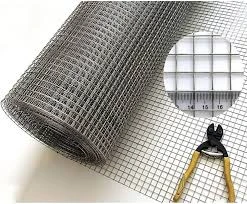Oct . 01, 2024 10:35 Back to list
Essential Guide to Choosing Metal Roofing Nails for Your Next Project
Understanding Metal Roofing Nails A Key Component for Durable Roofing
When it comes to roofing materials, metal roofs have gained significant popularity due to their durability, energy efficiency, and aesthetic appeal. However, the effectiveness of a metal roof is heavily dependent on the quality of its installation, and one often overlooked yet critical element is the type of nails used during the installation process. This article will explore the importance of metal roofing nails, their specifications, various types, and best practices for use.
The Importance of Metal Roofing Nails
Metal roofing systems are typically lightweight and long-lasting, but they require strong and reliable fastening methods to ensure a secure installation. Metal roofing nails are specifically designed to withstand the unique characteristics and aesthetic qualities of metal materials. Standard roofing nails may not provide the necessary hold or protection, leading to potential leaks, lifted panels, or even structural failures over time. Therefore, selecting the right nails is crucial for the longevity of the roofing system.
Specifications of Metal Roofing Nails
Metal roofing nails generally come with specific features that make them advantageous compared to traditional roofing nails
1. Material Most metal roofing nails are made from corrosion-resistant materials, such as galvanized steel or stainless steel. These materials are essential, as the nails will be exposed to various weather conditions, including rain, snow, and UV rays. Galvanization adds a layer of protection against rust and corrosion, ensuring that the nails remain resilient over time.
2. Length and Diameter The appropriate length and diameter of roofing nails depend on the type of metal panels being used and the thickness of the roofing material. Typically, for metal roofing, a nail length between 1.5 to 2.5 inches is recommended, while the diameter can range from 0.120 to 0.150 inches. Proper sizing is critical for penetrating the metal panel and securing it to the substrate beneath effectively.
3. Head Design The design of the nail head plays a significant role in the performance of metal roofing nails. Nails with a larger head, often referred to as washer-head nails, distribute the load more evenly and reduce the risk of the nail pulling through the metal panel over time. This design helps to create a watertight seal around the nail, further preventing water leakage.
Types of Metal Roofing Nails
Various types of metal roofing nails are available, each suited for specific applications. Here are some common types
metal roofing nails

1. Smooth Shank Nails These nails have a smooth shaft and are generally used in applications where high holding power is not a primary concern. They are easier to drive but can pull out more easily compared to other styles.
2. Ring Shank Nails Featuring rings or serrations on the shank, these nails provide superior grip and holding power, making them ideal for high-wind areas. Their design minimizes the risk of pull-through and is often recommended for metal roofing applications.
3. Screw Shank Nails These nails feature a spiral screw thread that enhances holding power even further. They are particularly beneficial in applications requiring maximum resistance to wind and uplift forces.
Best Practices for Using Metal Roofing Nails
To ensure a successful installation of a metal roofing system, consider the following best practices when using metal roofing nails
1. Proper Spacing Nails should be spaced according to the manufacturer's recommendations, typically between 12 to 24 inches apart. This spacing helps ensure an even distribution of weight and stress across the roof.
2. Correct Driving Technique Nails should be driven straight and flush with the roofing panel to prevent damage and ensure a tight seal. Overdriving can cause the metal to bend or create gaps, which can lead to leaks.
3. Sealants and Underlayments When installing metal roofing, it's wise to use sealants and underlayments designed for use with metal roofing systems. These products can provide additional waterproofing and enhance the overall durability of the installation.
Conclusion
In summary, metal roofing nails may seem like a small component in the grand scheme of a roofing system, but they play a vital role in the performance and longevity of metal roofs. By selecting the right type of nails, following the appropriate installation techniques, and adhering to best practices, homeowners and contractors can ensure that metal roofs remain secure and effective for many years to come. Investing time and resources in quality materials and installation methods is essential for achieving the full benefits that metal roofing offers.
-
The Role of Field Wire Fence in Grassland Conservation
NewsJul.15,2025
-
Stainless Steel Razor Wire Durability in Coastal Environments
NewsJul.15,2025
-
Enhancing Home Security with Mesh Fences
NewsJul.15,2025
-
Diamond Mesh Wire for Small Animal Enclosures
NewsJul.15,2025
-
Common Wire Nail Tensile Strength Testing for Woodworking
NewsJul.15,2025
-
Barbed Wire Corrosion Resistance Galvanization Techniques
NewsJul.15,2025









